Next, I go running article we cannot forget one of the important accessories is our best friend along the way.
If we do not exaggerate, this is really a close friend to help you avoid any injury and ensure your feet are safe as well as you finish on time, achieving the highest efficiency in training.
We are talking about an important accessory that is our shoes. When starting to practice, everyone prepares for themselves a beautiful new pair of shoes that are safe and the brand is trusted by many people, but after a period of practice, not many people pay much attention to the shoes.
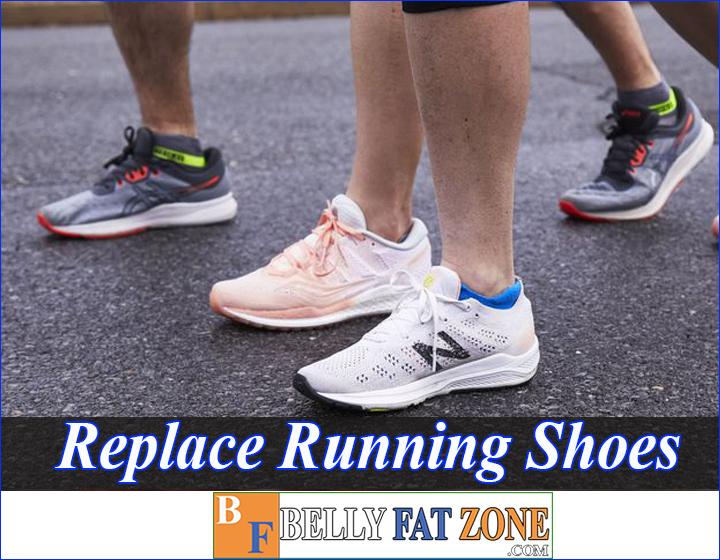
Most people often leave their shoes to the point of being extremely worn or torn before they decide to replace them.
Your running shoes have been by your side all the way, simple or tough.
But eventually, there will come a time when your shoes need replacing; Putting them aside and tightening on a new pair of shoes is important to your performance and running comfort, and above all running in shoes that are too old to potentially cause running injuries worth it. Now BellyFatZone invites you to refer to this article together!
When do you need to change into new shoes?
You can change tires every 50,000km, change the oil every 5,000km, replace the iPhone every time a new one comes out,… But when should you change running shoes? Although running shoes generally have better durability than fashion shoes, it still has its own “longevity”.
There is no definite answer to this. According to sportswear manufacturers, a pair of running shoes can be used to run about 600 km to 1000 km.
For someone who runs an average of 30km per week and only uses 1 pair of running shoes, you should change your running shoes every 6-9 months.
Shoe life also depends on running posture, body weight, road surface …
Normally, runners should change shoes when running about 400-800 km. (If you track your runs with your GPS watch or smartphone, it's simple to know when you are within 300–800 km; otherwise, you can make an estimate based on the number you run per week.)
However, the runner has an irregular run or strengthened exercise on rough terrain, so the shoes should be changed regularly.
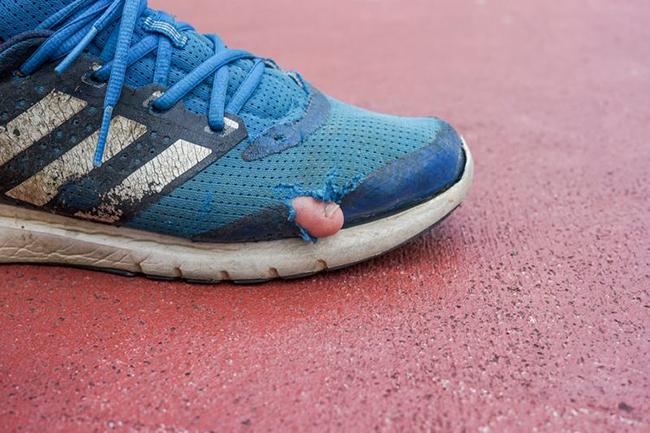
Here are additional factors that affect when to change your running shoes
-
The purpose of the shoe: Series of racing shoes like the NEXT% are designed to be lighter, providing better return force to increase your performance in the game, however, this is also a trade-off. Because it is composed of many different complex components, the durability of racing shoes is also not high.
-
Runner's Weight and Technique: It is quite obvious that the higher your weight, the lower the durability of your shoes. In addition, those who run too heavily on the ground or drag their feet, also reduce shoe life.
-
The number of shoes you use to run: If you have two pairs of shoes for alternate training, the total lifespan is then greater than the total lifespan of the shoes when you run in separate pairs. Like humans, running shoes take time to “recover”, if you give it time to “rest,” the shoes will last longer.
-
Running conditions: While your running passion is unlimited, if you limit running on rainy or hot days, running only on ideal surfaces will increase the life of your shoes.
-
Shoe Care: Keeping shoes dry and clean is another way to increase the life of running shoes.
Looking for answers to the question “When is the time to change into new running shoes” Bellyfatzone has gathered from many sources hoping to give you the most suitable answer.
Read more: Top Best Trail Running Shoe
Why need to change running shoes?
If looks don't matter to you, then it's hard to justify changing your running shoes while the one you're wearing is in good working order – although it can be damaged and worn out.
The truth about how often you should change the running-related shoes underneath the shoe surface.
After a certain period of use, the stability of the running shoe can be affected, and that leads to real reasons to replace the running shoe: an increased risk of injury.
Simply put, the more you use running shoes that have been worn for a long time, the greater the risk of harming your feet.
Usually, you should change your running shoes after 500-800 km use. That's because at this point the midsole on most shoes loses resilience and stops absorbing shock, which can have a lot of impact on your muscles and joints.
This means that if you run an average of 24 km per week, you will need to replace your shoes about every 5-8 months.
(If you track your runs with your GPS watch or smartphone, you can easily find out when you reach 500 – 800km. If not, you can make an estimate based on numbers of the amount you run per week.)
Usually, you should change your running shoes after 500-800km. That is because at this point the midsole on most shoes will gradually lose its resilience and reduce the ability or function to absorb shock and this can have a lot of impact on the muscles and joints of friends.
Read more: Strength Training For Runners Increase Achievements And Reduce Injuries
Factors affecting the durability of running shoes
When it comes to determining the durability of a running shoe, there are three key factors to help you identify:
Running terrain
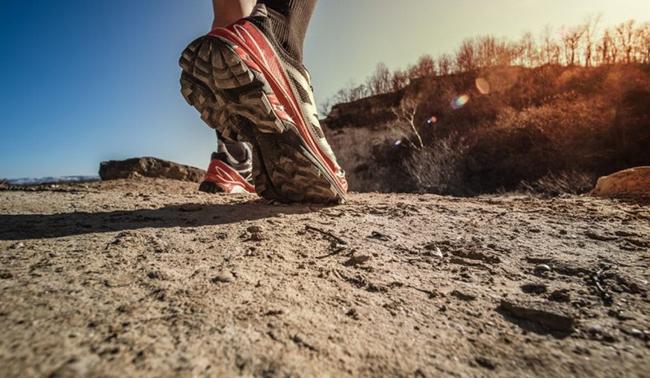
Where you run; On the road, trail, track, inside the house is one of the biggest factors that will decide how long your running shoes will last.
Most running shoes tell you what the ideal terrain for the pair is, and for those without ideal terrain, running is usually standard.
In fact, most runners run on a variety of terrains – even the city has parks covered with rocks and dirt, changing the type of environment in which your soul is in contact.
The key is to make sure that the majority of your runs are suitable for the terrain in which the shoe is made, or that otherwise may not be the best option for long-term use.
Read more: How to Relieve Heel Pain After Running? You Should Know This Before Running
Running type
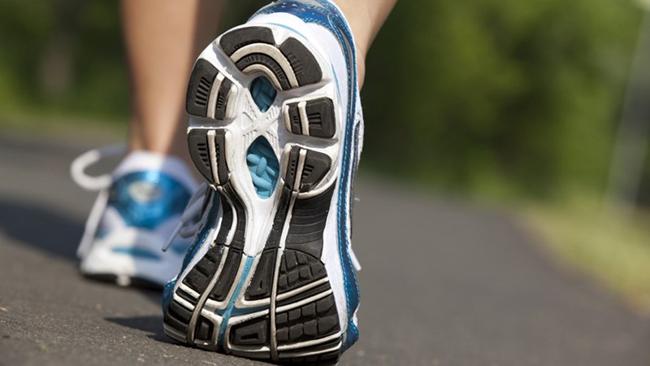
Your running style also affects the durability of a shoe. If you're unsure of the land where you're running, look at the bottom of a heavily used running shoe and see which part is most worn: front, middle, or heels.
Knowing this gives you more information when looking for a better pair of running shoes and choosing one to maintain your running style.
- Forefoot: This is most common for sprinters and hill runners, your shoes often wear under the big toe or go outside / the side of the front of the shoe. Often the outsole is worn exposing the midsole or, in the case of more wear, socks, and feet.
- Midfoot: The area under the toe bone of the foot (center of the foot), worn in the same way as the forefoot.
- Heel landing: this is a common run for long-distance runners. Unfortunately, the statistics show that this running style requires changing of running shoes more often than the other two models. While the rest of the shoe may look pristine, if the heel becomes excessively worn the foot and ankle can be damaged, gradually decreasing support, possibly leading to injury before you realize it.
Remember, there is no best run when it comes to the safest run. Knowing and knowing you are the type of runner is simply the first step in finding the right shoe for you.
Read more: Benefits Of Running in The Morning
Runner
From the factors that affect the shoe from the bottom to the main factor that affects it from above: you. Your weight and height, play a key role in making a shoe last.
Most running shoes are designed on the basis of an average runner, from weight to height, running speed, etc.
If you are heavier than this figure, a shoe can wear out more quickly and lighter can make the shoe last longer than average.
The same goes for when it comes to the height of the user. If your body is a lot different from the average shoe then there are only a handful of shoes that will suit you best.
Shoes have increased support, often these reinforce and make less wear. If in doubt, the best thing to do is ask before you buy to know if running shoes are right for you.
Signs that your shoe is about to wear
Examine the center sole
The midsole is the first part to check, if wrinkles appear, you need to change into a new shoe.
Specifically, the vertical lines of the sole are inherently tailored, but the horizontal, foamy line that runs along the body is the result of running over 500 km, indicating that the shoe has decreased elasticity.
Test Tip: Press one thumb in the center of your shoe at the midsole. If it feels a bit hard and hard to press on, no longer has good elasticity and cushioning, then change into another pair of running shoes.
The cushioning is always shockproof and resists compression, so if the area becomes stiffer, the damage to your feet won't be reduced.
Read more: The Benefits Of Cycling – You Will Be Surprised By These Things
Check the outsole of the running shoe:
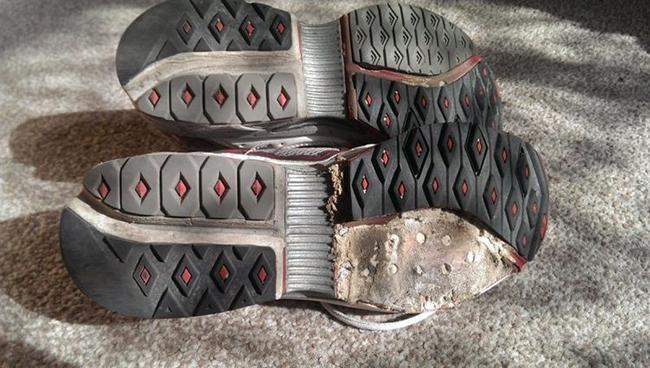
The most obvious sign when a running shoe needs to be changed is that the sole is worn out. The sole is more durable than the cushioning and aftershock absorber.
This can be tricky as some will show much greater wear than other parts of the shoe (depending on your running style).
So if the sole is worn out, that's probably when you need a new pair of shoes. You should never run in a shoe with a worn sole. Save them to go when gardening or mowing the lawn.
Test tip: Use your index finger to gently press on the center base and keep it that way, then use your thumb to press the outsole in the direction from the outsole into the midsole.
When you feel the compression of the midsole when you have not pushed the outsole more than when you started to push the outsole in, the sole padding of the sole is pretty much worn.
This means that your running shoes are no longer flexible and flexible, so you should quickly buy yourself a new pair of shoes for better cushioning.
The upper body is worn out
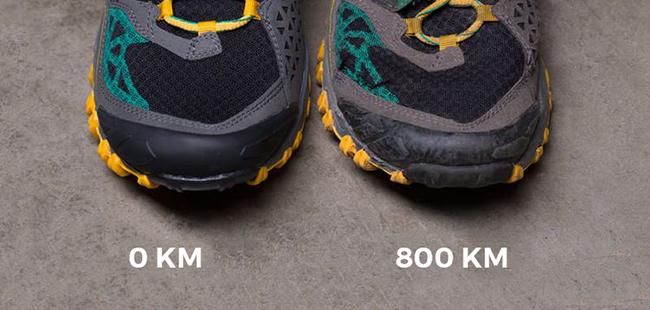
Don't worry no matter how dirty your shoes are. That's a good thing again. That means you are already using them. What you should pay attention to is the torn, frayed shoes on the shoe.
- Take a look at the shoes. Are the heels more stretched?
- Is there a place on the outsole that is worn out?
- Can you see how the shoe shape changes according to your foot?
Those are the signs that the shoes are too old.
If the edges of your shoe are worn but the soles are still in good health, it probably means you have chosen the wrong size for your foot.
While length is a measure of shoe size, flat feet are wider or can quickly cause the edges of running shoes to wear out.
If this happens to you, a size larger than 1/2 could be what you need for your shoe, or laces that can adapt to the foot while running. If you are continuing to wear worn running shoes, a reinforced upper is something to consider.
Frayed inner heel
Like the upper body, heel fraying can be caused by a size mismatch and exposed ankles and causing running friction.
A simple fix for this might be to try tying the laces back to provide better support to the upper part of the foot, preventing the heel and ankle from slipping off the shoe.
In addition to that, low-necked socks can also wear away the inner lining and the material, so consider longer length socks if you start to pay attention to the back of the shoe.
Pain and trauma
Besides all the other signs, the most important thing to watch out for is pain. A great running shoe will make your body feel as good as it did when you started, without any lingering pain.
If you find yourself starting to experience pain in places you've never seen before – especially in your feet, lower legs, and the instep, it could mean shoes are in need of replacement.
Listening to your body is the best way to gauge when to change your running shoes and to avoid injury before it's too late.
If you're in pain even if your shoes are relatively new, you may want to talk to a running specialist at a shoe store. Maybe you are wearing the wrong kind of shoe for your feet.
Here are additional factors that affect when to replace your running shoes:
- Minimalist shoes have little cushioning, so they only last about 500 km
- Traditional running shoes and max cushioned shoes tend to last up to about 800 km.
- Heavier people will use fewer kilometers than lighter people, regardless of shoe type.
- If you wear regular running shoes, the mileage will count towards the total.
- Dirt on your shoes isn't a big deal, but if you find your shoes wear significant wear, maybe it's time to change them. Beware of worn-out places on shoes such as heels, soles, torn or loose threads.
- If you notice new discomfort in your feet, legs, knees, hips, or back after running, maybe it's time to put on new shoes. The same is true if you have blisters or feel a burning area that you have never experienced before.
When To Replace Your Running Shoes

Tips to prolong the life of running shoes
While running shoes will eventually wear out, you don't want to change them too soon. Just like preventing injury from running, you will use your running shoes longer if you take care of them properly.
- Have at least two pairs of shoes. If you run using only one shoe, those shoes will carry all of your weight for running and daily use. But wearing multiple shoes will distribute the stress you put them on, so they all last longer.
- Only wear running shoes when exercising: If you have a habit of running in the morning before going to work, you should bring 2 pairs of shoes: 1 pair for running and 1 pair for work. As soon as the run is complete, give your shoes some time to rest, not wear them all day long.
- Don't leave shoes in too hot or cold places: Running shoes are not suitable for extreme heat or cold. You should buy a separate cupboard to store your running shoes, which are both neat and safe.
- Shoe cleaning. Just like when running in the rain, your shoes can catch mud or dirt on your run. Dirt can damage the upper body of the shoe, causing the shoe to wear out early.
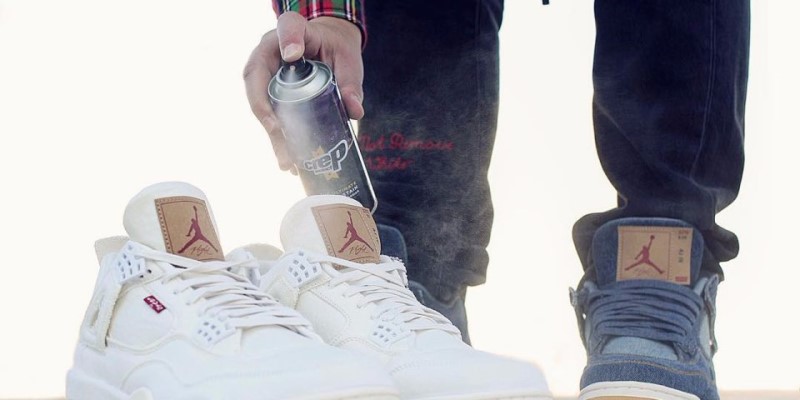
- Run-on appropriate surface. Conventional running shoes are made for street running, and trail running shoes are suitable for running on trails. Casual shoes won't be suitable if you overdo them on the trail too much and the lugs on your trail shoes will wear out faster on rough concrete.
- Get your shoes off the right way: A lot of people have a habit of taking off their shoes and putting on their shoes without re-adjusting the laces. This habit will deform the heel, and also affect the grip of the shoe. Remember to adjust the laces each time you put on your shoes and shoelaces to properly store your running shoes.
Top Best Selling running shoes:
View more:
- How To Walk To Lose Weight? How Many Km Should I Walk A Day To Lose Weight?
- How To Train For An Ultramarathon?
- How To Improve Running Form Avoid Injury And High Efficiency?
References
Hopefully, the information above has helped you to gain some more knowledge about “how often to replace running shoes”, and bring some small value to you. Please share this article if you feel it is useful. Thanks!






